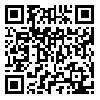Volume 2, Issue 2 (2017)
IJMPP 2017, 2(2): 233-238 |
Back to browse issues page
Download citation:
BibTeX | RIS | EndNote | Medlars | ProCite | Reference Manager | RefWorks
Send citation to:



BibTeX | RIS | EndNote | Medlars | ProCite | Reference Manager | RefWorks
Send citation to:
Feroze M, Afzal M, Sarwar H, Galani A, Afshan S. Knowledge and Practice of Registered Nurses about Patient Safety after Cardiac Catheterization in Punjab Institute of Cardiology Hospital in Lahore, Pakistan. IJMPP 2017; 2 (2) :233-238
URL: http://ijmpp.modares.ac.ir/article-32-7366-en.html
URL: http://ijmpp.modares.ac.ir/article-32-7366-en.html
1- Student of BSc Nursing Degree Program (Post RN), Nursing Hostel, Punjab Institute of Cardiology, Lahore, Pakistan.
2- Principal, Department of Nursing, University of Lahore, Pakistan.
3- Demonstrator, Department of Nursing, University of Lahore.
4- Dean, Department of Nursing, University of Lahore, Pakistan.
5- Biostatistician, Punjab Institute of Cardiology, Lahore, Pakistan.
2- Principal, Department of Nursing, University of Lahore, Pakistan.
3- Demonstrator, Department of Nursing, University of Lahore.
4- Dean, Department of Nursing, University of Lahore, Pakistan.
5- Biostatistician, Punjab Institute of Cardiology, Lahore, Pakistan.
Abstract: (11492 Views)
Background: Cardiac Catheterization is a critical health status which requires standardized care policies, as well as it needs qualified and skilled health provider to obtain good outcome of management.This study aimed toassess the knowledge and practice of nurses regarding patient safety after cardiac catheterization.
Methods: This cross-sectional study was conducted in Punjab Institute of cardiology located in Lahore, Pakistan from 01st December 2016 to 31st March, 2017. 171 female nurses through using convenient sampling technique were included in the study. Questionnaire with multiple choice was used to collect data. Likert scale for multiple choose questionnaires regarding knowledge and practice of the nurses were used Collected data were analyzed using SPSS version 21.
Results: Out of 171 participants, all (N = 171) were female, most nurses had job experience of 2-5 years and 6-10 years, they were represented by 34.5% and 31.0% respectively. Mean of total knowledge was found good, when compared to mean of practice which was poor. This showed that nurses have good knowledge about post cardiac catheterization complication. It was found significant value of P < 0.0001 by applying correlation, that showed there was a good association between knowledge and practice (P < 0.05).
Conclusion: There was positive association between the knowledge and practice about patient’s safety after Cardiac Catheterization among Pakistanis registered nurses. Nurses those have proper knowledge and practice could help in rehabilitation of patients.
Methods: This cross-sectional study was conducted in Punjab Institute of cardiology located in Lahore, Pakistan from 01st December 2016 to 31st March, 2017. 171 female nurses through using convenient sampling technique were included in the study. Questionnaire with multiple choice was used to collect data. Likert scale for multiple choose questionnaires regarding knowledge and practice of the nurses were used Collected data were analyzed using SPSS version 21.
Results: Out of 171 participants, all (N = 171) were female, most nurses had job experience of 2-5 years and 6-10 years, they were represented by 34.5% and 31.0% respectively. Mean of total knowledge was found good, when compared to mean of practice which was poor. This showed that nurses have good knowledge about post cardiac catheterization complication. It was found significant value of P < 0.0001 by applying correlation, that showed there was a good association between knowledge and practice (P < 0.05).
Conclusion: There was positive association between the knowledge and practice about patient’s safety after Cardiac Catheterization among Pakistanis registered nurses. Nurses those have proper knowledge and practice could help in rehabilitation of patients.
Received: 2017/05/30 | Accepted: 2017/06/1 | Published: 2017/06/29
References
1. Ahmed, M. (2015) Predictors of Post-Cardiac CatheterizationFemoral Artery Hematoma and Bleeding. Journal of American Science, 11 (3), 16-22.
2. Nahla Shaaban, A., Warda, Y., Abdo, M. & Ali, H. (2015) Nurses' knowledge and practice regarding implantable cardiac devices in Egypt. British Journal of Cardiac Nursing. 10 (1). [DOI:10.12968/bjca.2015.10.1.34]
3. Arathy, s. R. (2011) A study to assess the knowledge and practices among cardicac nurses about patients safety after cardiac catheterisation. Sree Chitra Tirunal Institute for Medical Sciences and Technology. Code No 6210.
4. Aziz, A. (2013) Evaluation of Nurses' practices provided to the Patients who undergo Open Heart Surgery in Sulaimani center of Heart Diseases (SCHD). Kufa Journal for Nursing Sciences.3 (!), 69-81,.
5. Chen, W. & Crozier, C. (2014) Endovascular repair of thoracic aortic pathologies: postoperative nursing implications. Journal of Vascular Nursing.32, 63-69. [DOI:10.1016/j.jvn.2013.07.001]
6. Hadi, A. (2016) Nurses, Knowledge Concerning an Implantation Pacemaker For Adult Patients with Cardiac Rhythm Disorder at Al-Nassirrhyia Heart Center. Kufa Journal for Nursing Sciences. 16 (1), 216-223.
7. Incardone, R. (2011) Creating a Self Learning Module For Nurses Caring for Patients Undergoing Angioplasty and Receiving Anticoagulation Therapy. Nursing Masters. Paper 8. Fisher Digital Publications.
8. Mohammed, M., Said, S. & Salah, M. (2013) Determining Best Nursing Practice: Effectiveness of Three Groin Compression Methods Following Cardiac Catheterization. Journal of American Science.9 (6), 274-285.
9. Panesar, N., Carson-Stevens, L., Cresswell, L., Salvilla, S., Slight, J., Javad, J. et al. (2015) How safe is primary care? A systematic review. BMJ Quality and Safty..25 (7), 544-553. [DOI:10.1136/bmjqs-2015-004178]
10. Rushdy, R., Youssef, Y. & Elfeky, Y. (2015) Nurses' knowledge and practice regarding care of patients connected to intra-aortic balloon pump at Cairo university hospitals. Egyptian Journal of Nursing. 10 (1). Available from: erepository.cu.edu.eg [ Accessed on 8th July, 2017].
11. Sheikh, A., Sood, H. S., & Bates, D. W. (2015) Leveraging health information technology to achieve the "triple aim" of healthcare reform. Journal of the American Medical Informatics Association, 22, 849-856. [DOI:10.1093/jamia/ocv022]
12. Sutker, W. L. (2008) The physician's role in patient safety: What's in it for me? Proceedings. Baylor University. Medical Center, 21 (1), 9-14. [DOI:10.1080/08998280.2008.11928347]
| Rights and permissions | |
 |
This work is licensed under a Creative Commons Attribution-NonCommercial 4.0 International License. |








